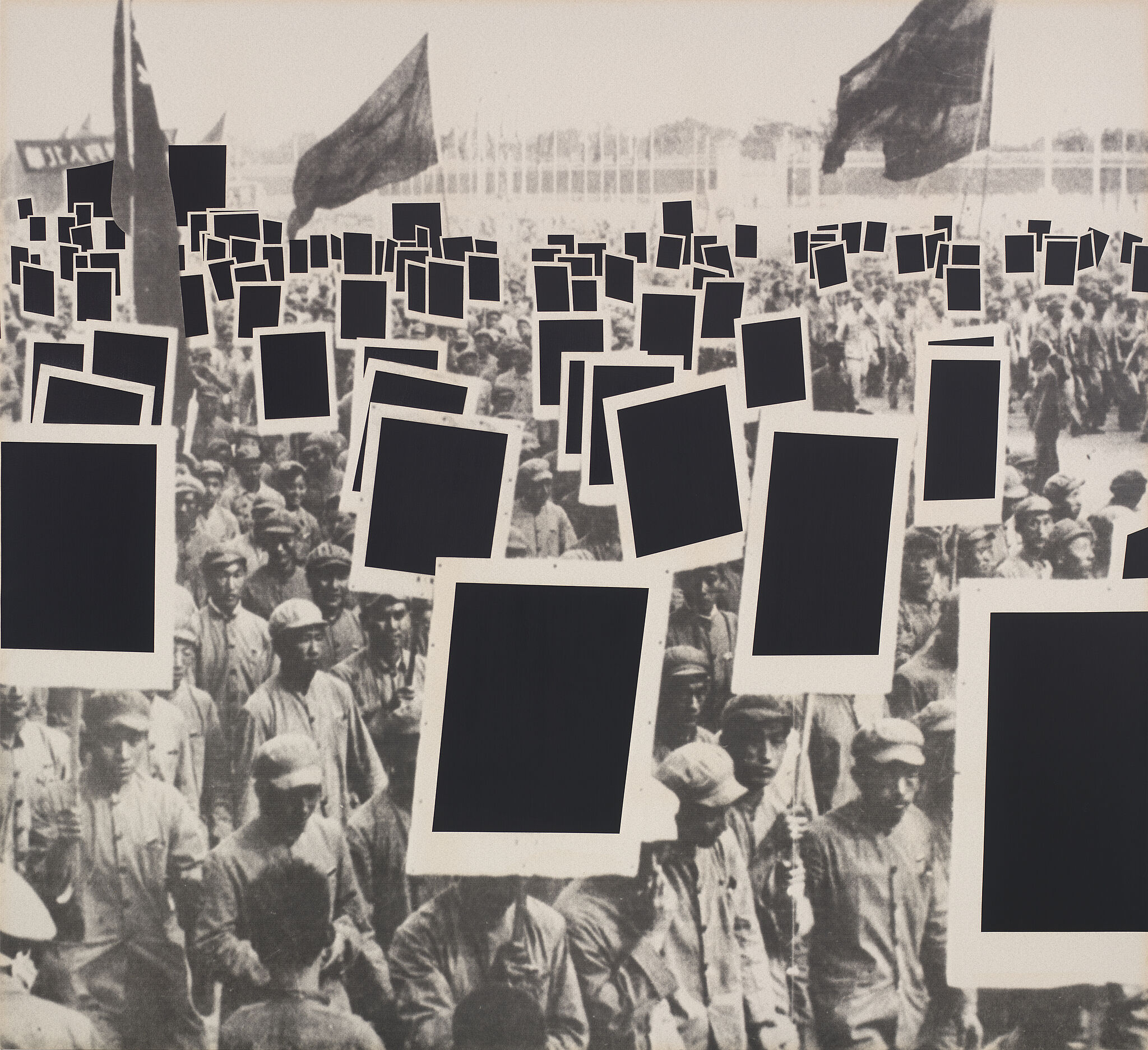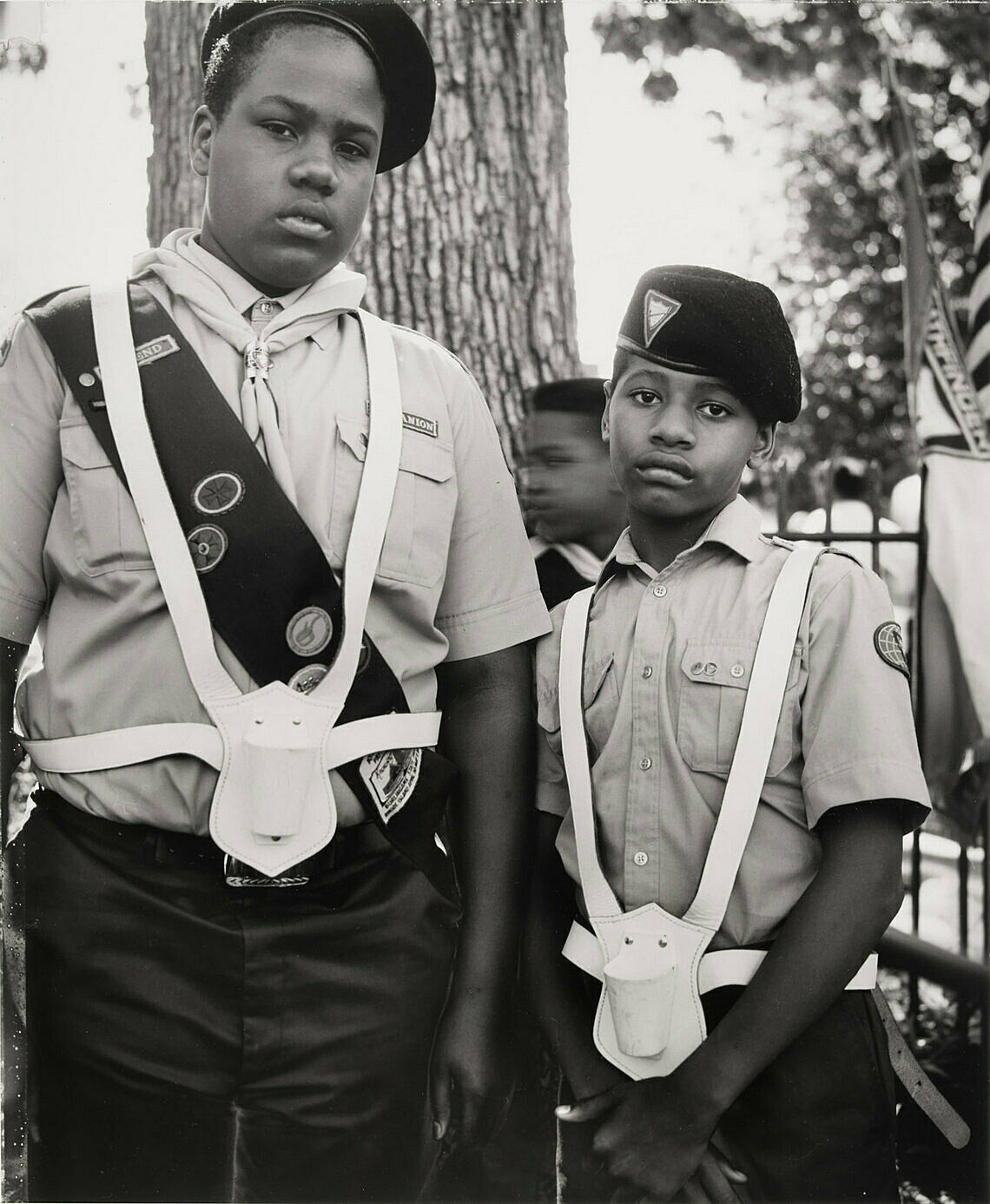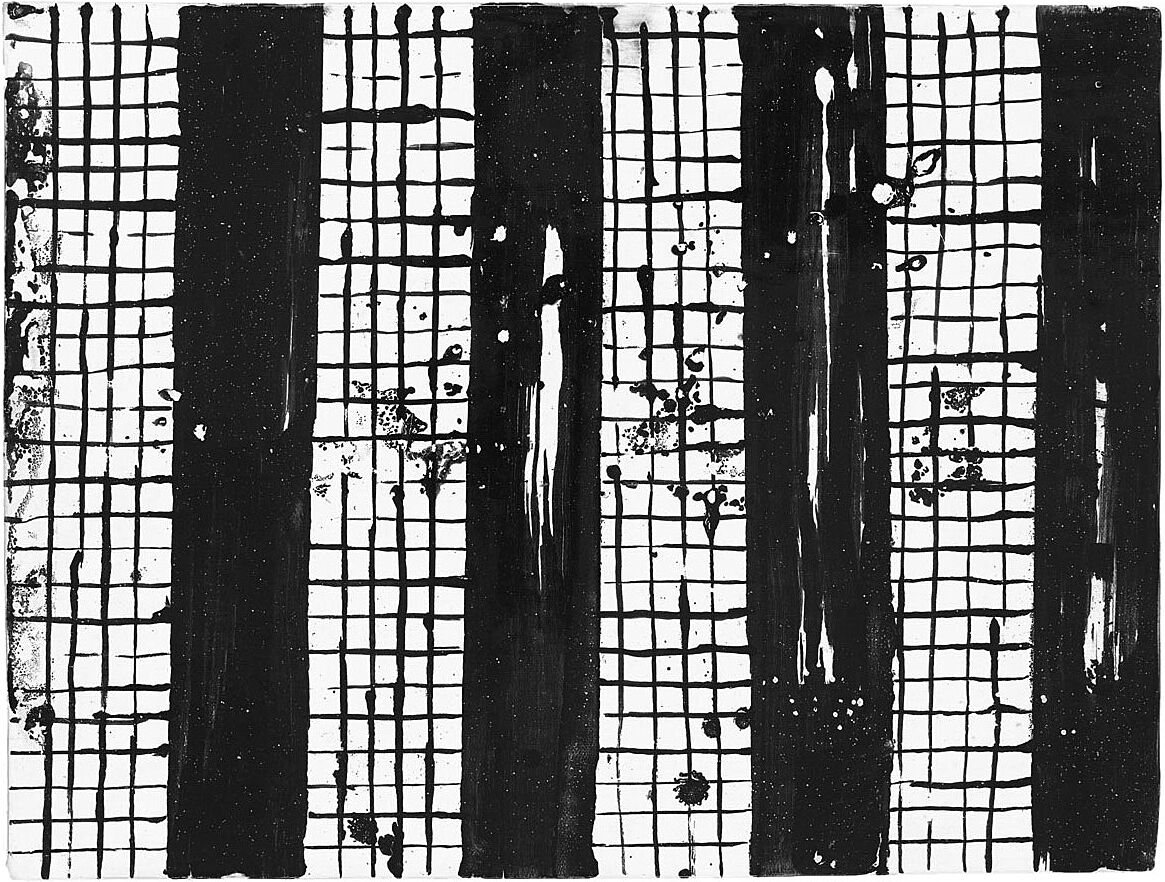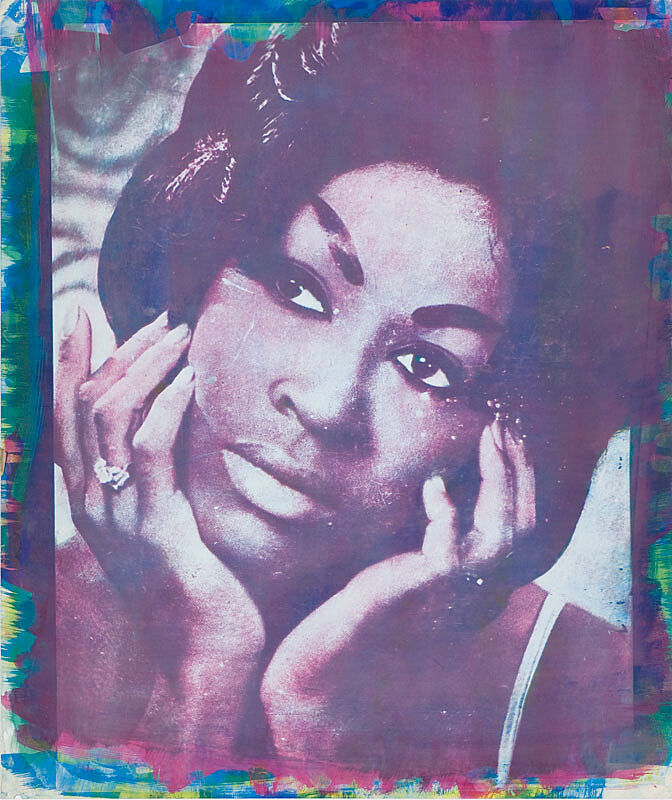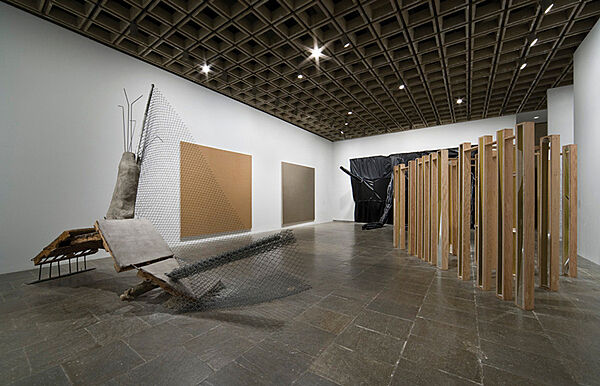Leslie Hewitt
1977–
Leslie Hewitt’s photographs and sculptures employ personal items and found objects to address notions of time, history, memory, and identity. Influenced by the French New Wave and Latin American Third Cinema movements of the 1960s and 1970s, she emphasizes personal narrative as a means to expose social and political issues, pointing to the techniques these filmmakers used to create a revolutionary visual language. Hewitt similarly pushes the boundaries of photography, questioning the structure of the medium and delving into its sculptural possibilities. “It’s important to remind ourselves that photographic meaning isn’t something that’s produced by the artist or inherent in the subject,” she has noted. “We’re all actively involved in its negotiation, all the time.”
One of seven photographs that comprise the Blue Skies, Warm Sunlight series, Untitled (Myriad) depicts a casual arrangement of books and a faded family snapshot pinned to the white wall. Barely discernable is a tattered copy of Jerome H. Skolnick’s The Politics of Protest—a 1969 report on protest movements that explored the role law enforcement played in the escalation of violence. She emphasizes the large-scale photograph’s physical presence by exhibiting it in a wooden frame that rests on the floor and leans against a wall. Suggesting the ways in which personal and collective memories coexist, the image points to a specific time of social change in American culture while documenting a present moment; each photo in this series was taken in her studio as the light subtly changed over time.

